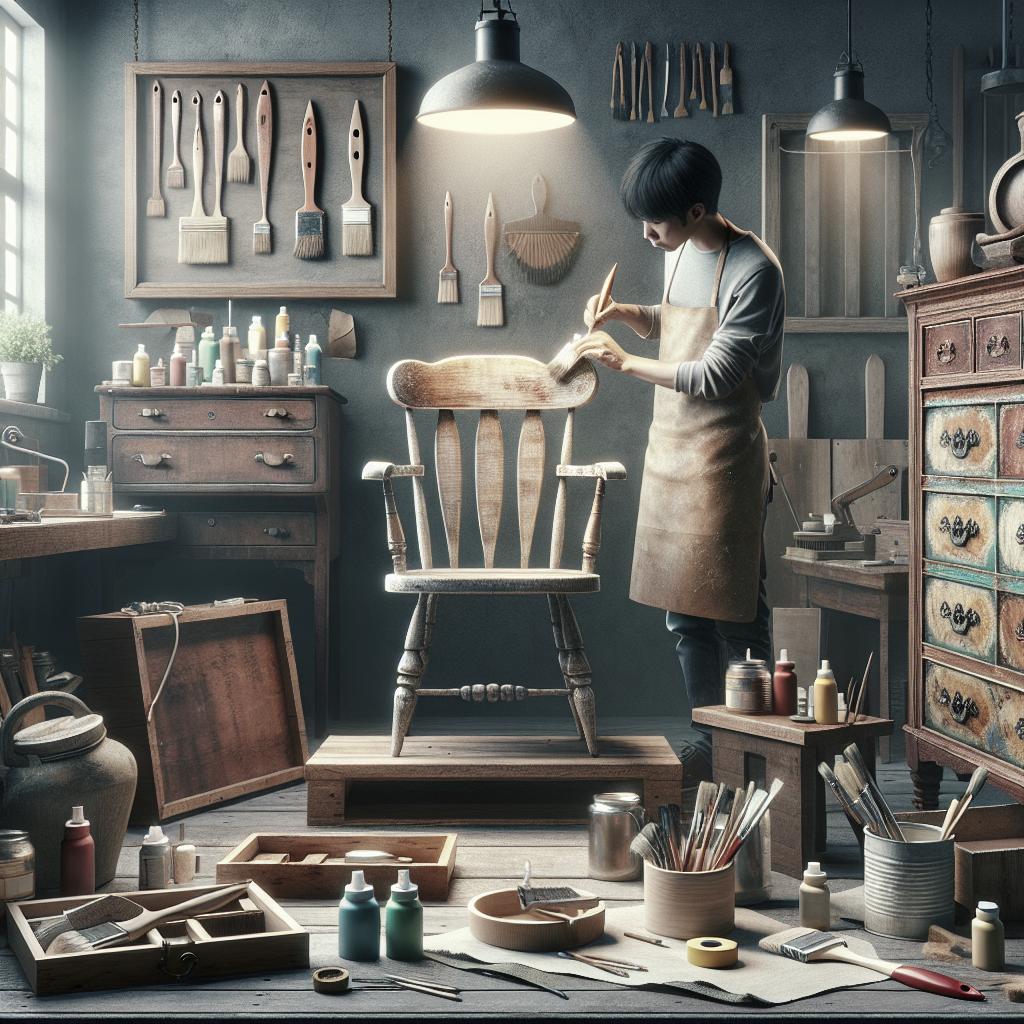Upcycling Furniture for Beginners
Upcycling furniture is a creative, sustainable way to refresh your home decor while reducing waste. This guide will walk you through the basics of upcycling wood furniture, providing ideas and inspiration for your projects. You’ll learn common steps to follow, pitfalls to avoid, and explore where to find pieces to upcycle. Whether you wish to transform an old desk into a stylish new piece or simply give life to tired furniture, we’ll cover everything you need to start your upcycling journey.
How to Upcycle Wood Furniture: The Basics
To get started with upcycling wood furniture, it’s important to grasp the basics. At its core, upcycling is about giving new life and purpose to old or unwanted items. When it comes to wood furniture, this might mean refurbishment, alteration, or even total transformation using paint, textile, or hardware changes.
Understanding your materials is key. Each type of wood reacts differently to stains and paints, so knowledge of your furniture’s material can guide your approach. Patience and creativity will be your greatest tools, allowing you to explore beyond conventional possibilities, making each piece uniquely yours.
Upcycling Wood Furniture Ideas & Inspiration
Inspiration is abundant for those looking to upcycle wood furniture. The charm of shabby chic and the functionality of mid-century modern are styles that blend wonderfully with upcycled creations. A great starting point is exploring platforms like Pinterest or Instagram, which offer a wealth of creative ideas and success stories.
Think about the function of the furniture and how it fits into your space. An old ladder can become a chic shelving unit, while a vintage trunk might transform into a coffee table with character. Let these ideas spark your creativity and drive your own unique vision.
Common Steps to Follow When Upcycling Wood Furniture
Envision Your Finished Product
Start by imagining the final look you wish to achieve. Consider colors, finishes, and how the piece will complement your space. A clear vision will guide your decision-making process at each step, ensuring you remain focused and consistent in your approach.
Clean the Piece Thoroughly
Cleansing your selected furniture piece is critical. Use a mild detergent and warm water to remove any dirt and grime. Avoid soaking the wood, as excess moisture can damage it. Once clean, let the piece dry completely before moving on to the next step.
Assess the Furniture for Damage
Check your furniture thoroughly for any damage, including cracks, chips, or loose joints. Identifying issues early allows you to budget and time repairs into your project, ensuring a smoother process. Repair any damage before proceeding, using wood filler for small cracks and clamp for loose joints.
Remove Hardware and Other Removable Elements
Before beginning any painting or staining, remove all hardware such as knobs, handles, and hinges. This allows for a clean finish. Be sure to label these elements carefully so they can be easily reattached once your upcycling project is complete.
Prepare the Furniture for Painting or Staining
Sanding is crucial in preparing furniture for a new finish. Use sandpaper or an electric sander to smooth out imperfections, removing any old paint or varnish. Start with coarser grits progressing to finer ones for a polished surface.
Apply Your New Finish
With a prepared surface, choose between paint, stain, or a combination of both for your finish. Apply even coats, and consider multiple layers for vibrancy and durability. Opt for brushes or rollers depending on your texture preference.
Allow the Finish to Dry Completely
Patience is crucial here. Enable each coat of finish to dry thoroughly according to your product’s instructions. Rushing this process can lead to smudging or peeling, compromising both the aesthetic and durability of your piece.
Add Finishing Touches or Other Elements
Once the primary finish is complete, it’s time to add the extras that elevate your furniture piece. Reattach the hardware or consider updating it for a fresh look. Adding new materials like upholstery or designing stenciled patterns can amplify uniqueness and personal touch.
Common Pitfalls When Upcycling Wood Furniture
Can You Paint Over Varnished Wood Without Sanding?
The idea of skipping sanding can be tempting to save time. While possible with specific primers, proper sanding promotes paint adhesion and longevity. Skipping this step may lead to future chipping or peeling, affecting the piece’s lifespan.
Removing Old Paint from Wood Furniture
Stripping old paint is often necessary for a fresh base. Use a chemical stripper or heat gun for effective removal, taking care to protect yourself and the environment by following all safety guidelines provided with the chemicals or tools.
Reinforcing Loose Joints
While some might ignore slight looseness in furniture joints, addressing this early can prevent larger structural issues. Reinforcing joints with glue or brackets ensures your piece is as sturdy as it is stylish, prolonging its functional life.
Working with Cracked or Damaged Wood
Approach cracked or damaged wood with care. Use fillers or replacement wood parts for best results, taking into account the wood type and structure. Achieving a flawless finish on repaired areas can be challenging but rewarding.
Where to Find Furniture to Upcycle
Finding the right piece is half the fun of upcycling. Thrift stores, online marketplaces like Craigslist or Facebook Marketplace, and garage sales are treasure troves for potential projects. Keep an open mind, as sometimes the less-than-perfect pieces hold the greatest potential.
Consider your community as a resource. Many neighborhoods have sharing groups or swap events perfect for finding items to upcycle. Don’t shy away from networking; friends or family might offer likely candidates gathering dust in their storage rooms.
Final Thoughts
Upcycling furniture is an art form that blends creativity with sustainability. While every project presents challenges, the reward of transforming forgotten pieces into cherished ones is immense. Keep experimenting with styles, materials, and techniques, learning and growing with each project.
| Section | Content Summary |
|---|---|
| How to Upcycle Wood Furniture: The Basics | A core understanding of upcycling, its purpose, and foundational strategies. |
| Upcycling Wood Furniture Ideas & Inspiration | Creative inspiration and conceptual considerations for upcycled furniture. |
| Common Steps to Follow When Upcycling Wood Furniture | Step-by-step process for safely and effectively upcycling wood furniture. |
| Common Pitfalls When Upcycling Wood Furniture | Challenges and common issues in upcycling with solutions. |
| Where to Find Furniture to Upcycle | Sourcing locations and tips for finding upcyclable furniture treasures. |


